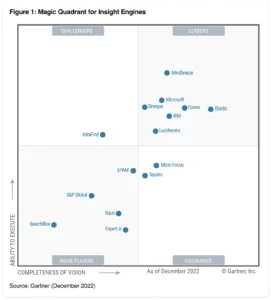
BETTER USER EXPERIENCE WITH SEARCH
MISSED OPPORTUNITIES
The search function of a website is often treated as an afterthought, even on an e-commerce site where this is vitally important.
A standard CMS or even a DXP platform has a built-in search function but it is very limited in functionality, resulting in missed opportunities because visitors cannot find what they are looking for.
Unfortunately, they often switch to a competitor’s website, and in the worst case, never return.
This blog goes beyond the beautiful design of a search box in a well-considered location on a website or application.
IMPROVING THE USER EXPERIENCE WITH SEARCH
The basic idea of a good User Experience is that the visitor or customer can easily find what he or she is looking for. A well-worked-out flow and design are therefore very important, but that should not be the end of it!
You’ve made sure that the search field is easy to find, but the actual search result might need a lot of improvement.
That’s why several solutions have been devised to show your visitor the most relevant search results, which can give the user experience and therefore the conversions a huge boost.
We’ll look at them below:
Keyword search
The Keyword search is the simplest and oldest implementation of a search function. After entering a search query, the software will scan the data for the presence of the keyword that matches the search query and shows hits from the ones found first on top, while the more obscure or deeper ones will end up somewhere down the list. With some keyword search engines, you can refine the search results with booleans and wildcards.
Unfortunately, such a search will still make you ‘search’ in the results, which results in the visitor giving up quickly. We are all too happy to be facilitated.
Insight engines
Today, an insight engine can combine keywords, data connectors, UI components, and machine learning to offer customers and employees more relevant information and personalized experiences. Where keyword search is limited to searching data only, an insight engine uses structured and unstructured data to answer almost endless questions. Therefore, an insight engine is not only “search”, but it is search, data, and Ai.
Under this umbrella term, you will encounter different methods, with a large overlap in functionality, such as:
- Vector search
Vector search is a technique that uses machine learning to detect the semantic relationships of similar items. It can add meaning and context and therefore display similar or near search results, thanks to ANN algorithms. Vector search is often used in e-commerce applications, where related or similar items are suggested to increase sales. - Cognitive search
Cognitive search is an AI-based search technique that uses natural language processing (NLP), machine learning, and other advanced techniques to interpret user queries and provide highly relevant results. Cognitive search can also use data from various sources and formats, such as text, images, audio, and video. In other words, the goal of cognitive search is to understand the query.
Large language model (AI)
In the near future, a large language model (LLM) will become more prominent. An LLM is an artificial intelligence model that is trained on vast amounts of textual data and can understand natural language and generate human-like responses. LLMs are used to improve the accuracy and relevance of search results by analyzing the user’s search query and providing contextually relevant information.
The most well-known LLMs are Google’s BERT & OpenAI’s chatGPT.
2023
It promises to be a very interesting year in terms of search. Thanks to the significant leap forward with LLM, Insight Engines can be used in a very human and user-friendly way to search for answers. The beginning of a new (r)evolution with new opportunities and applications for search experiences. So stay tuned!
Elasticsearch
According to Gartner, Elasticsearch is the most innovative insight engine and firmly in the leader quadrant. This is not surprising given the many advantages that Elasticsearch has over other solutions. Therefore, take your search experience to the next level with Elasticsearch and improve the user experience by providing faster, more accurate, and more personalized search results, as well as supporting features such as faceted search and autocomplete.
Benefits:
- Faster and more accurate search results: Elasticsearch can quickly search through large amounts of data and return the most relevant results based on the user’s search query. This can improve the user experience by providing fast and accurate results and reducing the time users spend searching for information.
- Facetted search: Elasticsearch supports faceted search, which allows users to filter search results based on different attributes or categories. This can help your users find exactly what they’re looking for and result in a more efficient and personalized search experience.
- Autocomplete and suggestions: Elasticsearch supports autocomplete and suggestions, which allow users to refine their search queries and find relevant results faster. This can also reduce the chance of zero-result pages or irrelevant results.
- Scalability: Elasticsearch is a scalable search engine, which means it can handle large amounts of data and traffic without sacrificing performance. This can provide a smooth and uninterrupted user experience, even during periods of high traffic.
- Personalization: Elasticsearch can be used to personalize search results based on a user’s past behavior and preferences. This can result in a more relevant and personalized search experience, which can lead to more user engagement and satisfaction.


Elk Factory is your partner
Looking for a reliable partner to implement Elasticsearch? Look no further contact us! Elk Factory is Elite Elastic Partner.
